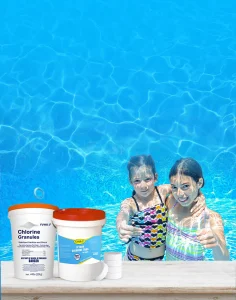Maintaining a swimming pool requires diligent care and the proper use of chemicals to ensure a clean, safe, and inviting environment. One of the key components in pool maintenance is the use of chlorine tablets. These tablets play a crucial role in sanitizing pool water by killing bacteria and algae, thus preventing unwanted guests from thriving in your pool. Understanding the frequency and method of adding chlorine tablets to your pool is essential for effective pool care.
Determining the Frequency of Chlorine Tablet Application
Factors Influencing Chlorine Demand
Several factors affect how often you should add chlorine tablets to your pool. These include:
- Pool Usage: More swimmers mean more contaminants, requiring more frequent chlorination.
- Weather Conditions: Hot, sunny weather breaks down chlorine faster than cooler, cloudy conditions.
- Pool Size: Larger pools require more chlorine to maintain the same level of sanitation as smaller pools.
- Type of Pool: Outdoor pools may require more frequent chlorination than indoor pools due to exposure to the elements.
It's important to maintain a consistent chlorine level between 1-3 parts per million (ppm) to ensure the water remains safe and clean. Regular testing with a reliable pool water test kit is essential to determine when it's time to add more chlorine tablets.
Ideal Scheduling for Chlorine Tablets
For most residential pools, adding chlorine tablets once a week is a good starting point. However, based on the factors mentioned above, you may need to adjust this frequency. During periods of heavy use or extreme weather conditions, checking your chlorine levels more frequently can help you decide if additional chlorine is needed sooner.
For detailed guidelines on how often to put chlorine tablets in pool, click here. This resource offers a comprehensive look into managing your pool's chlorine levels effectively.

Proper Placement and Dispensing of Chlorine Tablets
Choosing the Right Dispenser
Chlorine tablets should never be added directly to the pool water as they can damage the pool's surfaces. Instead, use one of the following methods:
- Floating Dispensers: These devices float on the pool's surface, gradually dissolving chlorine tablets over time.
- Automatic Chlorinators: These are installed in the pool's circulation system and can be adjusted to control the rate at which chlorine is released into the water.
- Skimmer Baskets: While not the preferred method, if you use the skimmer basket, ensure the pool pump is running continuously to dissolve the tablets evenly.
Safety Precautions
Handling chlorine requires caution. Always wear gloves and protective eyewear to avoid skin and eye irritation. Ensure that the pool area is ventilated if you are working with powdered or granular forms of chlorine.
In conclusion, regular and strategic scheduling of chlorine tablet addition is vital for maintaining pool water quality. By understanding the factors that affect chlorine demand and adhering to recommended practices for tablet dispensing, you can ensure your pool remains a healthy and enjoyable place for everyone.